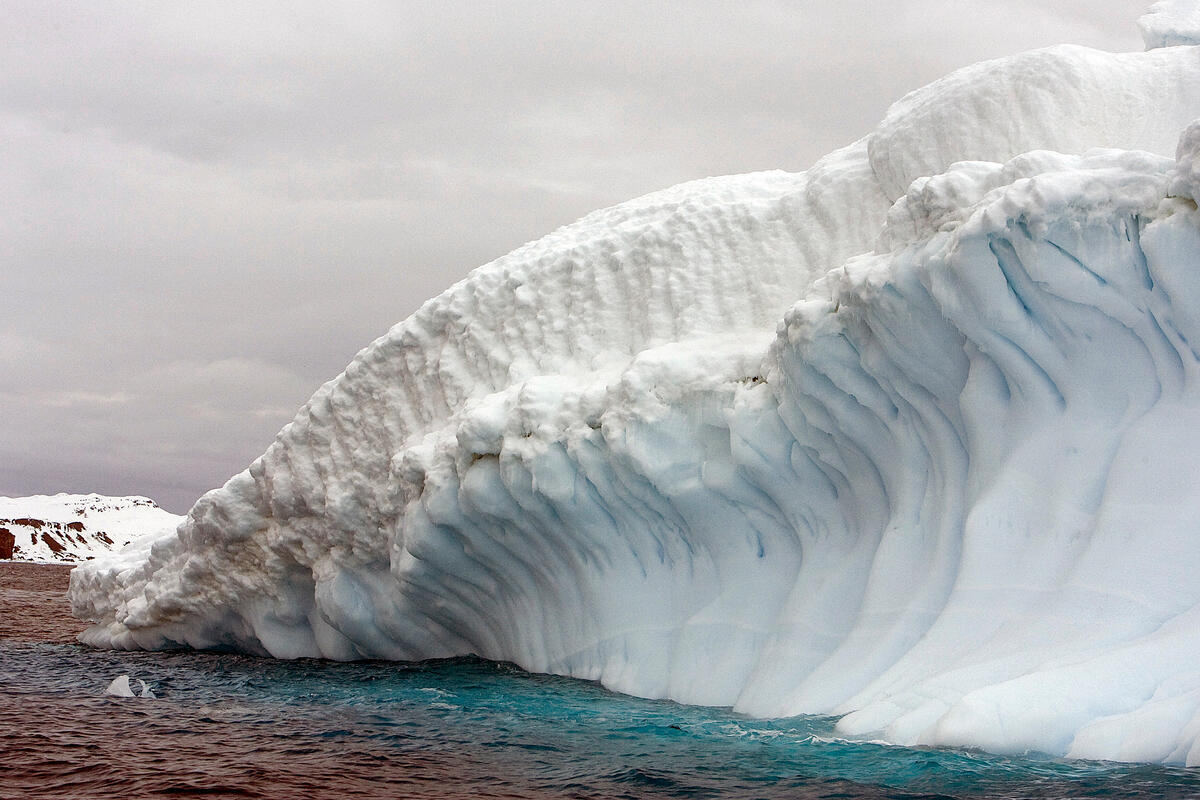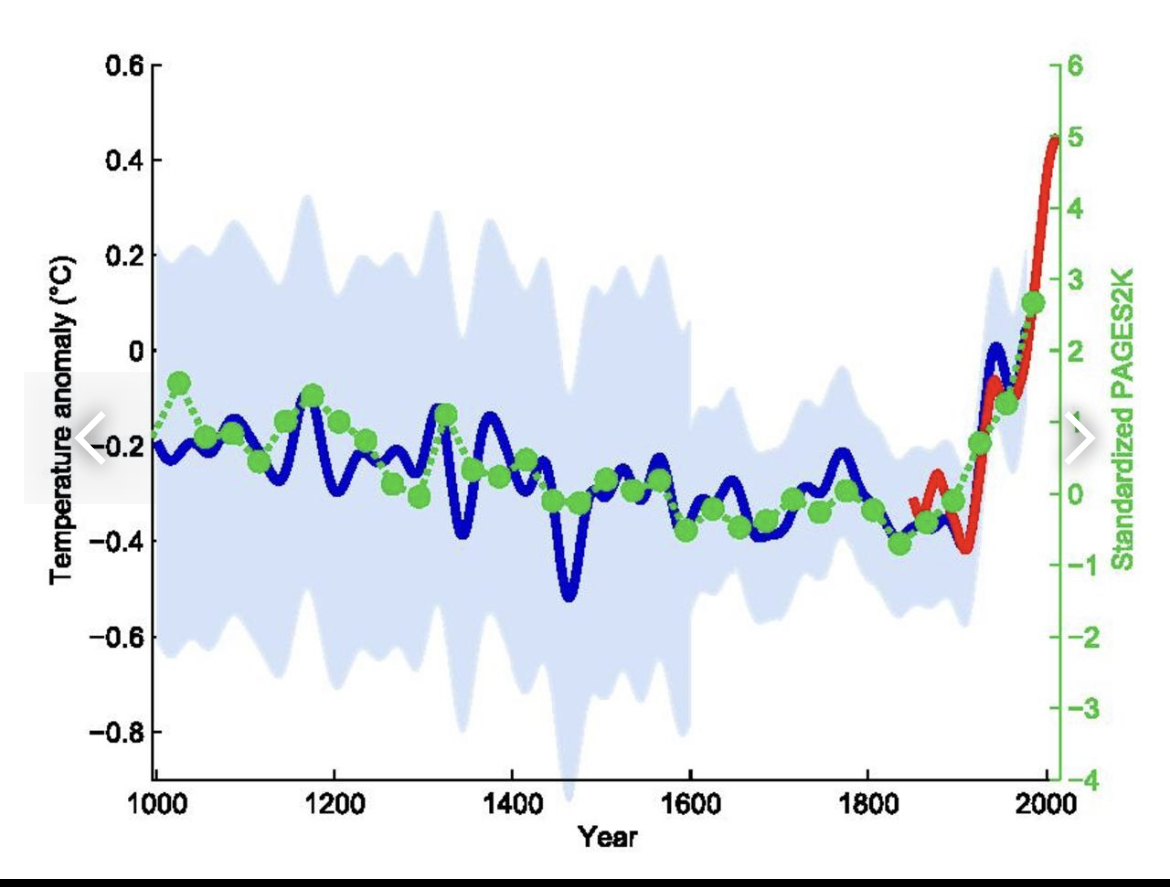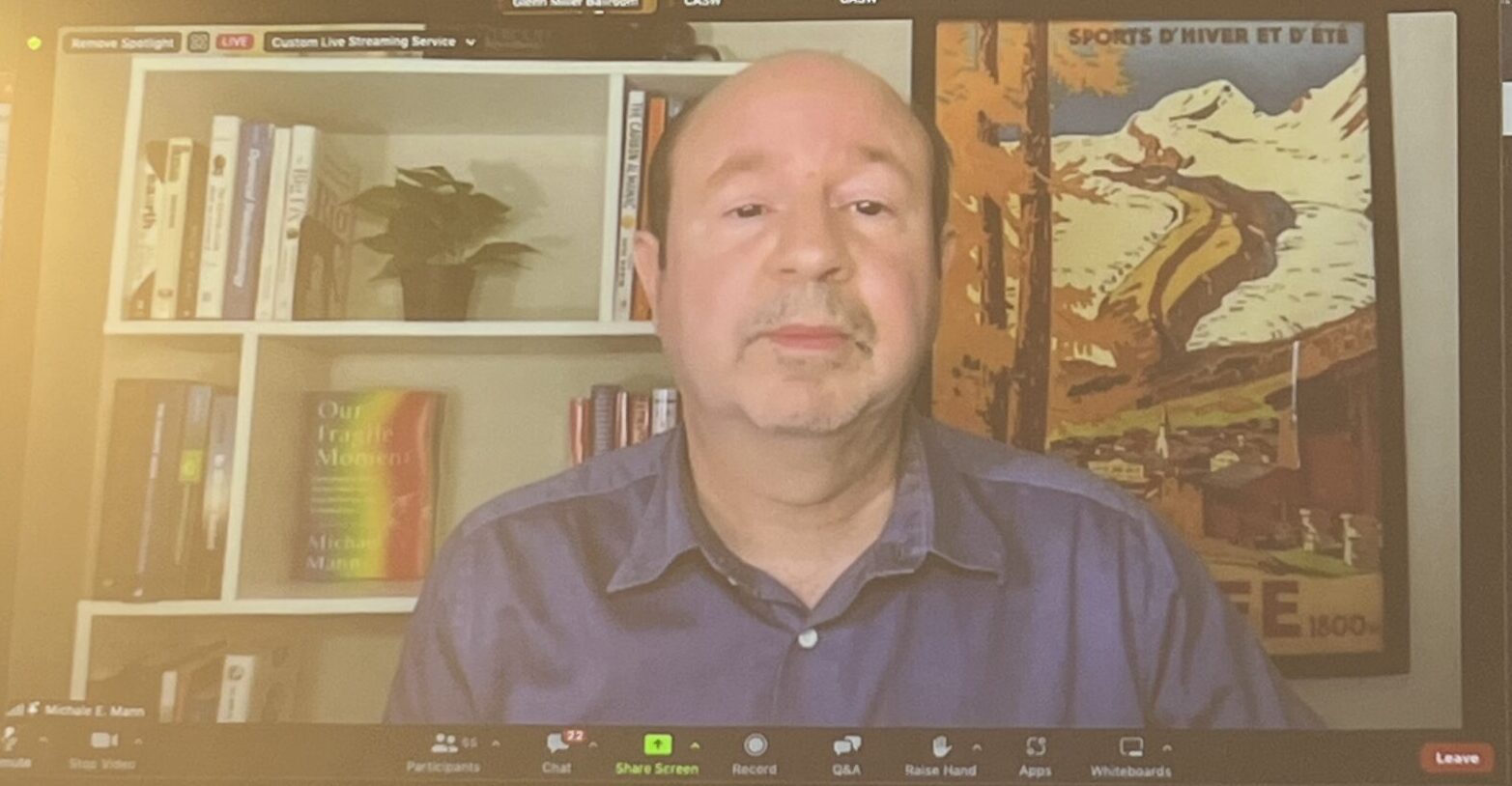
Michael Mann shares his cautious optimism for the future through a look at Earth’s past
The warming climate threatens Earth’s glaciers, including Collins Glacier in Antarctica, shown here in 2007. The time for action is now, climate scientist Michael E. Mann told the ScienceWriters2023 audience. Photo by UN Photo/Eskinder Debebe
Hey, mighty brontosaurus, don’t you have a lesson for us?
The line from “Walking in Your Footsteps” by The Police echoed through the ballroom of the University Memorial Center on University of Colorado Boulder campus the morning of Oct. 7. Climate scientist Michael E. Mann played it to illustrate a point: “The lessons that the past has to offer us speak to both the resilience and the fragility of our climate.”
Mann delivered the Council for the Advancement of Science Writing’s Patrusky Lecture as part of the ScienceWriters2023 conference. He framed the talk with the context of his new book, Our Fragile Moment: How Lessons from Earth’s Past Can Help Us Survive the Climate Crisis. The book looks at paleoclimate, examining how Earth’s temperatures have varied in the past to better assess the threats of climate change today.

Now a Presidential Distinguished Professor at the University of Pennsylvania and director of the Penn Center for Science, Sustainability and the Media, Mann is known for his “hockey stick” graph, revealing how global average temperatures are rising at an exponential rate compared to the past 1,000 years. His climate research threw him into the climate change movement. He has since become one of the foremost scientists advocating for action to address climate change.
The song draws a direct connection between the extinction of the dinosaurs and the true threat of nuclear winter. During the summer of 1982, when it was written on the island of Montserrat by renowned musician Sting, the menace of nuclear war was not fully grasped. The metaphor of synchronicity, when two things separated in time and space somehow have some meaningful connection, is illustrated with this song—and is a key theme in Mann’s book.
“The difference is one of agency,” he said. “The dinosaurs couldn’t do anything about their plight … we don’t have that excuse.”
Humans are changing the climate in a way that threatens human civilization. But how did we get here? Mann walked the audience through Earth’s past climate catastrophes. He gave an overview of diversification and evolution of life up to the present, highlighting several mass extinctions, including the asteroid impact that killed the dinosaurs.
And yet, Mann said, “the science has hopeful messages for us.” If we stop emitting carbon dioxide, atmospheric concentrations of the greenhouse gas will begin to drop and surface temperatures stop rising. The hope of a slowdown in global warming, he said, comes from new, more comprehensive climate models that incorporate how the ocean absorbs carbon. The oceans will continue to warm slowly even when emissions are cut, like a locomotive that rolls to a slow stop. In addition to curbing carbon emissions, further mitigation, like carbon reduction through habitat restoration or carbon-capture technologies, will play a part in the fight against climate change.

Mann argues that the paleontological record offers reasons for cautious optimism. As one audience member phrased the message succinctly, “there is urgency, but also agency.” However, Mann emphasized, “urgency without agency leads us nowhere.”
Mann called out the media for the role bad actors have played in preventing climate action. Giving an equal platform to climate denialism provides a sense of false equivalency. Even rebutting myths can perpetuate them in the public mind. Coverage often focuses on an endless stream of what Mann dubs “climate doom porn.”
The science journalism community can play a crucial role in recentering the climate conversation around our ethical obligations and what we can do. Solutions journalism, Mann said, is a way to provide people with a path forward, through a legitimate, objective hopefulness.
There has been progress on carbon mitigation, he said. With the recent commitments made at the United Nations climate change conference in 2021 (COP26) to keep warming below 1.5 degrees Celsius, Mann believes we can curb the worst effects of climate change. He also gains hope from activism and actions taken by young people.
“We are at the precarious point … the fragile moment,” he said. “We still have the opportunity to keep warming within the bounds of a stable climate [that support human civilization].”